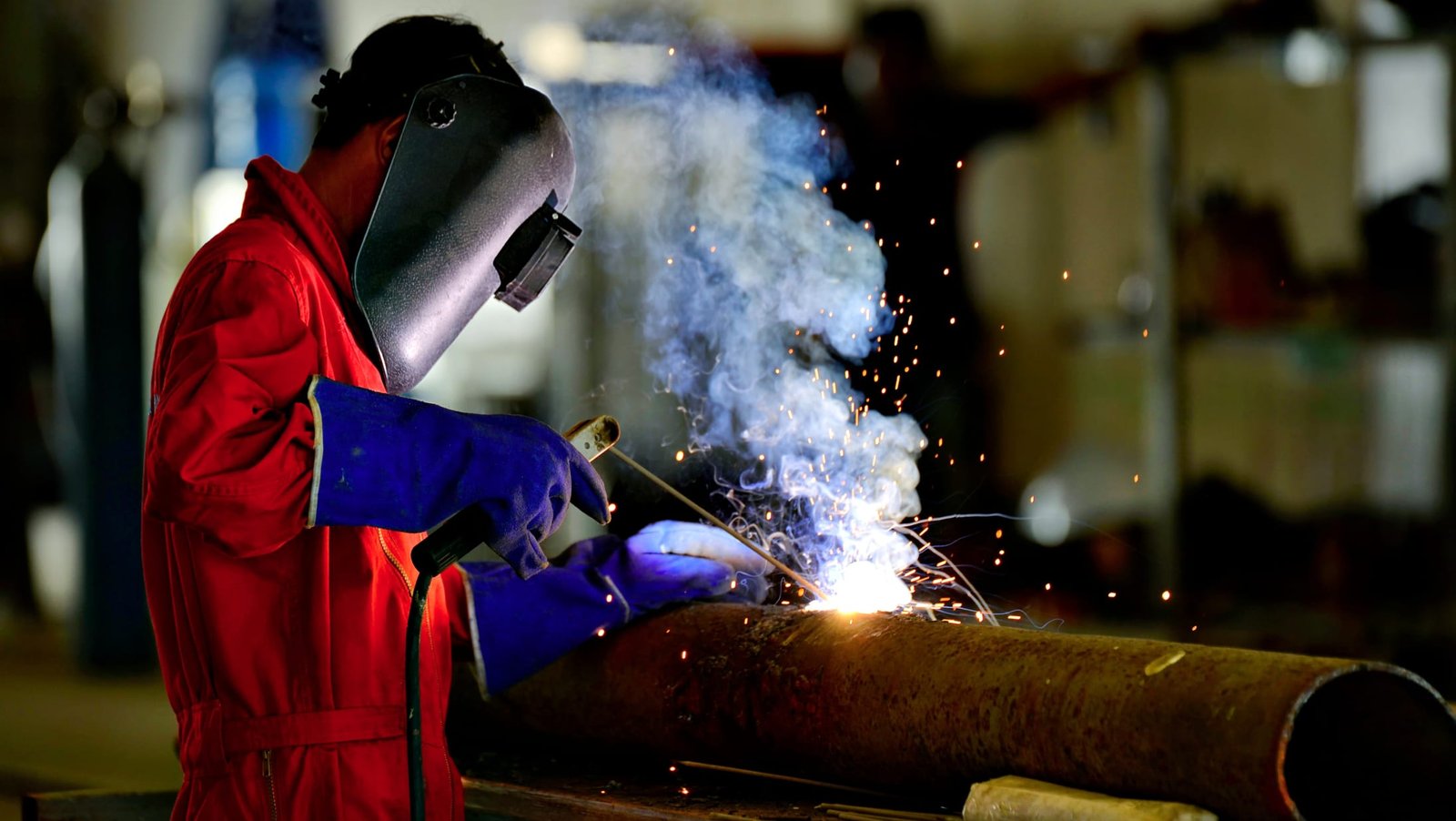
Welding is a fundamental process in many industries, from construction to manufacturing. It involves joining two or more metal parts using heat and pressure. However, did you know that gas cylinders play an essential role in the welding process? These tanks store gases used for shielding the weld pool from atmospheric contamination during welding. In this blog post, we will explore the importance of gas cylinders in welding, their benefits, types available and how to use them effectively during welding processes. So let’s dive into it!
The role of a gas cylinder in welding
Gas cylinders play a crucial role in welding, and they are essential for creating high-quality welds. The primary function of gas in welding is to protect the molten metal from atmospheric contaminants such as oxygen, nitrogen, and hydrogen. By shielding the weld pool with gas during the welding process, gases like argon or CO2 minimize oxidation and prevent porosity formation.
The inert nature of these gases helps create a stable arc that provides better control over the heat input into the joint. This control leads to more consistent penetration depth without burning through thin materials. Gas shields also provide excellent protection to both small and large areas by providing continuous coverage over a wide range of applications.
Using gas cylinders in welding improves productivity while producing higher quality welds compared to other methods that do not use these tanks. With proper setup and handling procedures, using gas cylinders can help produce strong durable welded joints that last long after completion.
The benefits of gas welding
Gas welding is a widely used technique in the industry because of its numerous benefits. One major advantage of gas welding is that it produces strong and long-lasting welds, making it an ideal choice for heavy-duty applications such as shipbuilding, pipeline construction, and automotive manufacturing.
Another benefit of gas welding is that it allows for precise control over the heat input during the welding process. This makes it possible to create intricate designs or work with delicate materials while maintaining high levels of accuracy.
Gas welding also offers greater flexibility in terms of material selection. It can be used to join various types of metals including steel, copper, brass and aluminum.
The best amazing machine welder is a highly efficient and versatile tool that can produce strong and precise welds in various applications. It is a must-have for any professional welder or DIY enthusiast looking to achieve top-quality results.
In addition to these advantages, gas welding is a relatively simple process requiring only basic equipment and training. This means that even novice welders can quickly learn how to use this technique effectively without extensive technical knowledge or experience.
Ultimately, whether you are a professional welder or just starting out, gas welding provides many benefits that make it an excellent choice for any project requiring high-quality welds.
The types of gas cylinders used in welding
When it comes to welding, there are different types of gas cylinders that can be used in the process. Two of the most commonly used gases for welding are argon and carbon dioxide.
Argon gas is often used for TIG (tungsten inert gas) welding because of its ability to provide a stable arc during welding. This type of gas cylinder is typically made from aluminum or steel and has a capacity ranging from 20-80 cubic feet.
Carbon dioxide, on the other hand, is often mixed with argon to create what’s known as C25 gas. This combination provides better penetration during the welding process and produces less spatter. C25 gas cylinders are usually made from steel and range in capacity from 20-80 cubic feet.
Another popular option among welders is oxygen-acetylene gas cylinders which combine oxygen and acetylene gases to produce an extremely hot flame perfect for cutting through thick metals. These types of cylinders come in sizes ranging from 10-300 cubic feet depending on their intended use.
Choosing the right type of gas cylinder depends largely on the specific needs of your project. It’s important to consult with a professional before making any decisions regarding your equipment so you can ensure you’re selecting the best possible options for your work.
How to use a gas cylinder during the welding process
Using a gas cylinder during the welding process is essential to ensure that the welder has access to the necessary gases required for their project. The first step is to make sure you have selected the correct type of gas cylinder needed for your specific welding job.
Before using the gas cylinder, always ensure it is properly secured in an upright position and connected safely to your welding equipment. Remember, safety should always be top priority when handling any compressed gases.
Next, adjust and set up your regulator according to manufacturer instructions. Make sure that all connections are secure before opening the valve on your gas cylinder. Once open, allow a small amount of gas flow through before igniting your torch flame.
As you begin welding with your newly ignited torch flame, keep an eye on both pressure gauges – one on your regulator and another located near where you’re working. This will help maintain consistent pressure levels throughout the entire process.
Once you’ve completed work with the gas cylinder or need to move it elsewhere – remember not only disconnect but also shut off its valve completely as well.
Conclusion
The role of a gas cylinder in the welding process cannot be overstated. It provides the shielding gas necessary to protect the weld and ensures that it is strong and durable. There are several types of gas cylinders used in welding, each with its unique features and benefits.
It is essential to choose the right type of gas cylinder for your specific welding needs, whether you’re working on stainless steel or aluminum. Remember to handle these cylinders with care and use them according to safety guidelines to prevent accidents.
Gas welding offers numerous advantages over other forms of welding, including precision control over heat input, high quality welds with minimal distortion, and better overall efficiency.
By understanding how a gas cylinder works during the welding process, you can optimize your workflow for maximum productivity while ensuring safe operations at all times. So go ahead and make use of this powerful tool as you improve your skills as a welder!










